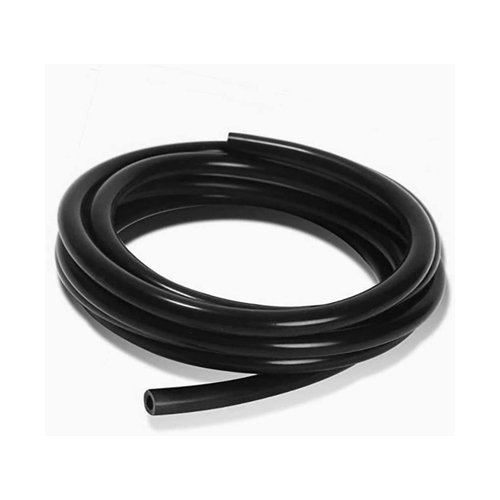Picture this: you’re cruising down the highway, the engine purring beneath you when suddenly, steam starts pouring out from under the hood—your radiator hose just blew. Not only does this nightmare scenario bring your trip to a screeching halt, but it also signals a costly and preventable problem. For wholesalers and car manufacturers, knowing the causes and how to prevent these issues is crucial. In this in-depth guide, we’ll look at the most common causes, how to spot damage early, and the best preventive measures to keep your vehicle running smoothly.
The most common reason for a radiator hose to burst is too much pressure in the cooling system, usually from a blockage like a plugged-up radiator or a bad radiator cap. This can put extra stress on the hoses during times of high engine load and high speed, causing them to stretch beyond what they were designed for.
But that’s just the tip of the iceberg. Let’s dive in.
What Causes Radiator Hoses to Burst?
- 1. Too Much Pressure: When the cooling system builds up too much pressure, usually due to a clogged radiator or a bad radiator cap, hoses can burst. This often happens when a vehicle is under a heavy load or traveling at high speeds.
- 2. Normal Wear and Tear: Radiator hoses live in a harsh environment inside the cooling system. Over time, exposure to hot coolant and engine vibrations can cause the hoses to break down, weaken, and eventually fail.
- 3. Improper Installation: If you don’t install hoses correctly, they can be put under too much stress or movement, causing them to wear out or break. This includes hoses that are too tight, too loose, or twisted during installation.
- 4. Chemical Breakdown: The coolant in the radiator hoses contains chemicals that can break down the hose material over time if you don’t change the coolant according to the manufacturer’s recommendations.
- 5. Temperature Changes: The hoses expand and contract as the temperature changes. Over time, this weakens the structure and causes the hoses to crack and burst.
- 6. Physical Damage: Damage from external sources like road debris, engine components rubbing against the hose, or improper maintenance practices can create weak spots that burst under pressure.
How to Determine Whether the Radiator Hose is Damaged?
- 1. Physical Check: Look for cracks, bulges, or splits on the hose surface.
- 2. Leaking: Coolant leaks near the hose connections could be a sign of trouble.
- 3. Soft Spots: Feeling unusually soft areas on the hose could indicate internal damage.
Preventive Measures for Radiator Hose Maintenance
- 1. Check Hoses Regularly: Check radiator hoses for wear, leaks, or damage regularly. It’s a good idea to check hoses when you change your oil or during other routine maintenance.
- 2. Use the Right Coolant: Use the right coolant and mix it according to the manufacturer’s recommendations. The wrong coolant can speed up hose degradation.
- 3. Make Sure Connections are Tight: Check that all hose clamps and connections are tight and secure to prevent leaks and slippage, but don’t over-tighten them. Over-tightening can cause the hose to weaken and fail.
- 4. Keep Contaminants Away: Keep your engine compartment clean to prevent oil, grease, and other contaminants from coming into contact with your hoses. They can break down rubber over time.
- 5. Watch the Temperature Gauge: Keep an eye on your engine’s temperature gauge to make sure your cooling system is operating within the normal range. Overheating can be a sign of a failing hose or other cooling system issue.
- 6. Flush the Coolant System: Regularly flush the coolant system and replace the old coolant to get rid of debris and corrosive substances that can damage hoses and other cooling system components.
- 7. Protect from Physical Damage: Make sure the radiator hoses are protected from potential physical damage, such as rubbing against sharp edges or moving parts in the engine compartment.
- 8. Replace on Schedule: Follow a preventive maintenance schedule for replacing radiator hoses, even if they show no visible signs of wear. Replace hoses according to the manufacturer’s recommendations or at the first sign of wear, typically every 4 to 5 years.
- 9. Use Quality Parts: When replacing hoses, use high-quality, OEM-equivalent or better hoses. They will tend to last longer and resist the common causes of hose failure.
- 10. Get a Professional Inspection: If you are unsure about the condition of your hoses or if you notice any symptoms of cooling system problems, have a professional mechanic inspect them to prevent more serious problems.
How to Solve the Problem of Radiator Hose Bursting?
- 1. Immediate Action: If a hose bursts while you’re driving, pull over safely and shut off the engine to prevent further damage.
- 2. Inspection and Replacement: Have a mechanic inspect the system and replace any damaged hoses right away.
- 3. System Check: Make sure you have the entire cooling system checked to prevent future hose bursts.
Knowing how to maintain your radiator hoses will not only help prevent problems, but it will also extend the life of your vehicle. By checking them regularly and knowing what to look for, you can catch a hose that’s about to burst and keep your vehicle running and safe.
Summary
To keep your ride reliable, you’ve got to take care of the hoses that carry coolant to and from the radiator. That means watching for signs of wear and damage, making sure they’re installed correctly, and checking the system regularly. If you’re proactive, you can avoid a hose burst—and the unexpected repair and downtime that come with it.





